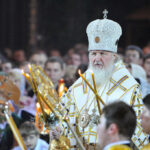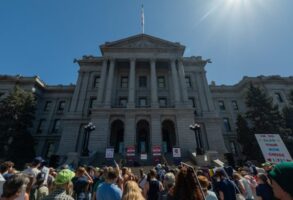Published January 29, 2014
During the mid afternoon of January 29, reports from Kiev indicated that an impasse had been reached on the burning question of an amnesty for Maidan civil-reform protesters who had been arrested throughout Ukraine. Earlier in the day, it seemed that more than 50 members of President Viktor Yanukovych’s Party of Regions in parliament had been peeled away from their caucus and were prepared to support, against the president’s wishes, an unconditional amnesty that would leave the Maidan protests intact by not compelling protesters to leave the government buildings they had occupied not only in Kiev but, in recent days, all over Ukraine. Then, it was reported by sources inside the parliament, Yanukovych blew a gasket, met with his party members, and threatened to disband parliament and declare martial law if an unconditional amnesty were passed. Some of the defectors from the Yanukovych party line wilted, and thus the reported impasse ensued.
Finally, according to the BBC, late at night on January 29 the parliament passed a conditional amnesty law requiring protesters to leave all government buildings 15 days after the president signs the law and it is published in official journals. Certain protest sites were, it seems, exempted from the de-occupation provisions of the law.
Given the frustrations this decision seems likely to ignite among the Maidan protesters, January 30 promises to be another dramatic day on the streets of Kiev and elsewhere.
In light of these developments, an eyewitness report from Kiev by Mychailo Wynnickyj of the Kyiv-Mohyla Academy, one of Ukraine’s most highly respected institutions of higher learning, is worth citing at length:
I spent a couple of hours on Maidan; walked up to the front lines on Hrushevskoho Street, and strolled around the freshly occupied “Ukrainian House” on European Square; prayed in the tent chapel; spent time trying to keep warm near burning barrels with other protesters. My purpose was to get a sense of the “social mood” — the impression that one gets from TV and Internet often doesn’t reflect reality. What I saw can be characterized as follows: determined people, working together building barricades, handing out hot drinks and food, talking quietly about the geographic spread of the revolution beyond Kiev. . . .
Frankly, I was surprised at the very small numbers of radicals . . . in the city center. According to many media reports, I should have seen a great many more young men dressed in helmets, chanting nationalist slogans, walking around with baseball bats. Of course, some such fighters were in evidence. . . . But the several thousand others demonstrating their discontent with Ukraine’s regime a mere 100 meters from the Interior Ministry troops, were “normal” citizens — the same people I had gained immense respect for during the peaceful phase of Ukraine’s revolution in December. . . .
This has made me think about a phenomenon that Clausewitz called “the fog of war.” Napoleon is noted to have once said, “Four hostile newspapers are more to be feared than a thousand bayonets.” In the context of the past two months in Ukraine, and given that information spreads much faster today than in the days of Bonaparte or Clausewitz, I have no doubt that the ongoing revolution in Ukraine is first and foremost a conflict in which informational messages are more potent weapons than Molotov cocktails, stun grenades, or even massive numbers of picketing demonstrators. . . .
In its final days (and the coming weeks are its final days), the Yanukovych regime will try to misinform and cloud the realities on the ground as much as possible. As the wave of attacks by demonstrators on the oblast [provincial government] buildings shows, the regime has lost its legitimacy, and has run out of means (manpower) with which to maintain its authority through force. It will therefore try to maintain authority by repackaging the current conflict as one involving “extremists,” terrorists,” “nationalists,” etc. These are the cries of a regime in agony, and should not be believed.
Ukraine’s revolution is not over yet. It is clear that we are witnessing the final days of the Yanukovych regime, but the actual format of the climax of their winter’s events and their denouement is unknown. . . . I should note that the video footage of Mykhailo Havryliuk — who was stripped naked and abused by Berkut riot police [last] week — has served to galvanize the Maidan demonstrators, and has spread the protests well beyond Kiev. Images of Havryliuk’s dignified behavior under extreme stress, and his simple modesty after having been rescued (during and after the press conference), have “gone viral” in Ukraine. They demonstrate the values of the Maidan better than any slogan, and I would argue that (in addition to the multiple deaths and injuries resulting from police brutality) they have served as a catalyst for regional rebellions across the country. His message needed no packaging, nor was there anyone available among the protesters to package it. That, I guess, is both the strength and weakness of Maidan.
God help us!
Wynnyckyj’s description of the impact of the Havryliuk’s video reinforces the analysis of the Ukraine civic-reform movement and the Ukrainian revolution given to Vatican Radio this past weekend by Bishop Borys Gudziak, the Greek Catholic leader who is president of the Ukrainian Catholic University in Lviv. Bishop Gudziak reminded his listeners that, while the Maidan movement began as a “Euromaidan,” protesting the Yanukoych regime’s withdrawal from a European Union–accession agreement (under intense pressure from Moscow), it had evolved over the past two months into a “Maidan of dignity”: a mass movement demanding elementary decencies and honesty in public life, an end to rampant economic and political corruption, and the rule of law, not its simulacrum.
That, and not some unquenchable thirst for the fleshpots of Western Europe, is what has led grandmothers to bring ice cubes to Independence Square in Kiev, to pack into sandbags that reinforce the demonstrators’ position. That is what has led pensioners, not richly endowed with resources, to bring food and drink to the protesters. That is what has led, with rare exceptions, to the extraordinary discipline and remarkable capacity for spontaneous self-governance shown by the occupiers of Independence Square and other chief Maidan sites. That is why there are prayer tents at Maidan sites.
It is a remarkable thing to watch a civil society being born, and under the most difficult circumstances. In the long march to democratic normality that is the inevitable lot of the Maidan movement, the moral commitments to decency, honesty, and legality that have sustained the revolution thus far are going to be sorely tested. Their defense is as essential as the defense of elementary civil liberties. For those moral commitments are the only sure foundation of civil liberties and authentic democracy.
— George Weigel is Distinguished Senior Fellow of Washington’s Ethics and Public Policy Center, where he holds the William E. Simon Chair in Catholic Studies.










